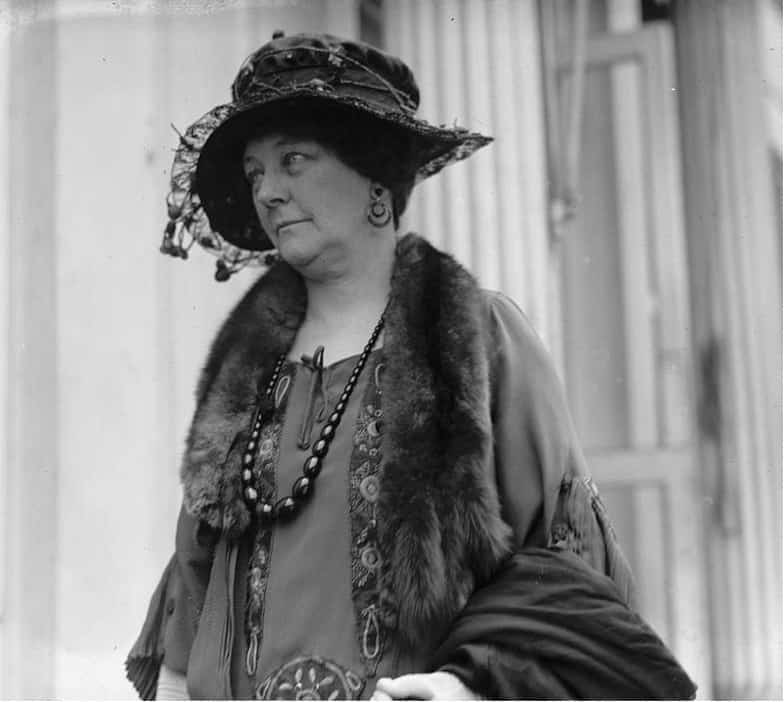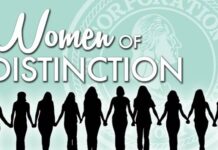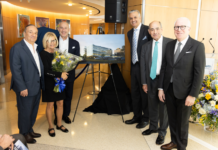
Henrietta Livermore of Yonkers
By Mary Hoar, Yonkers Historian
After defeating Al Smith for NY Governor, Nathan Miller denounced the League of Women Voters January 1921, stating the organization was a “menace to our institutions.” Although it was common knowledge Miller was “suspicious of women voters,” State Republican Women Executive Committee Chairman Henrietta Livermore was one of the transition directors 1919 of the National Woman Suffrage Association (NWSA) and League merger, resigned from NWSA, the Board of publication The Woman Citizen, and the Leslie Woman Suffrage Commission.
Although a nationally recognized leader for women’s right to vote, Livermore said she was not in sympathy with the League of Women Voters. Because she was President of the newly formed National Women Republican Club (NWRC), people feared this meant Republican women in the League would have no place in the State Party!
More than half the League Board members were Republicans; people feared it would cause a major division in the movement because many Republican, Democratic and non-partisan suffragists opposed reelection of US Senator James Wadsworth. A vocal Suffrage opponent, Wadsworth was married to Alice Hay Wadsworth, President of the National Association Opposed to Women Suffrage. In 1926, he lost his US Senate seat to Robert Wagner.
A month later, Henrietta denied leaving because of Governor Miller’s remarks; she said it was because the League of Women Voters hadn’t studied party government and responsibilities enough to tell people how they should participate in a party. She stressed Republican women in the League always were eligible for membership… if they put the party first!
She opened the National Women’s Republican Club headquarters in Manhattan early 1921; the Club selected their first honorary member, incoming First Lady Florence Harding.
Henrietta, with the other three women delegates to the 1920 National Republican Convention, attended Harding’s Inauguration March 1921. A few days later, board members of the NWRC had lunch with Honorary Member Florence Harding… and her husband, the President!
Her one disappointment in 1921 was the April failure of her bill giving women equal representation on county political committees. Although passed unanimously in the State Senate, Assembly Republicans met behind closed doors and rejected her proposal.
The NRWC changed the style of political meetings; at a Yonkers meeting for local state representatives, the theme was lemonade, cake and flowers, a far cry from the usual smoke-filled rooms.
June 1921 saw the unanimous passage of Mrs. Livermore’s resolution by State Republicans; it was noted the next state convention would have 383 delegates.
Henrietta became a frequent visitor to the White House. January 1922, President Harding appointed Henrietta and four men as members of the American Commission to the Brazilian Centennial Exposition.
In August that year, after Henrietta returned from Brazil with Commission members, rumors circulated, intimating Henrietta Livermore would resign from the Commission. Members were called to Washington by Secretary of State Hughes; Livermore and other members of the group fought to remove Deputy Commissioner Frank Harrison, appointed to run the group when Commissioner General David Collier was away. Collier, Livermore and two other committee members wanted President Harding to remove Harrison, claiming he falsified records and wasted funds. Harrison countercharged Henrietta, charges she strongly stated were “totally unfounded and ridiculous.”
After the meeting with Secretary of State Hughes, she received high praise from Hughes when she made her report on her recent trip. had lunch at the White House with President and Mrs. Harding and National Republican Chairman John Adams.
Two months later, carrying a greeting from President Warren G. Harding, Henrietta Livermore of sailed for Brazil to attend the formal opening of the American Building.
The following summer, she went to a month-long conference on international policies in politics at the Institute of Politics in Williamstown, Massachusetts, which covered questions on Mexico, Peru and Haiti. While there, she presented a paper on “Outstanding Problems of the American Continent.” After completing the course, she “dropped into the White House” to visit her friends, President and Mrs. Coolidge. In December, she was presented with a “handsome bronze medal,” awarded for her work as Commissioner at the Brazilian International Exposition.
In 1924, she was feted at the Elks Club by more than 300 people, men, women, Republicans and Democrats, who paid tribute to her “spirit, intellect, and unselfish devotion to ideals of general betterment.” Women speakers praised her devotion to the cause of woman suffrage, her faith that, in spite discouragements along the way, she did the smallest tasks to ensure the prize of vote for all was won. One speaker who received loud cheers was former Public Safety Commissioner Thomas Tobin who had carried a banner in suffrage parades long before the vote was won.
In 1925, she went on a world tour to study foreign governments.
That summer found her back at the Williamstown Institute of Politics, the institute’s fifth conference. This time, it was open only to those “considered to be especially fitted to participate and contribute to the round table discussions,” attendance limited to under three hundred people. According to Henrietta, the group was “more interested in promoting the welfare of mankind than in conserving possessions.”
Henrietta continued to travel as an official US Government representative; she began publishing series of articles on South America in The Yonkers Herald from the various countries she visited. In 1931, Secretary of State Henry Stimson appointed Mrs. Arthur Livermore a member of the national Council of the Inter-American Institute of Intellectual Cooperation.
Henrietta Wells Livermore of Yonkers passed away on October 15, 1933. Her surviving family members, husband Arthur, sons Henry and former Assemblyman Russell, received many telegrams of sympathy from people of prominence around the country.
Outstanding leader, national figure, and close friend of three presidents, Livermore revitalized the New York suffrage movement and later organized and headed the Women’s National Republican Club. One of Henrietta Livermore’s passions was the National School of the National Women’s Republican Club; after her death, it was named in her honor.
This is a four part series on Henrietta Livermore, which can be found at Yonkerstimes.com





